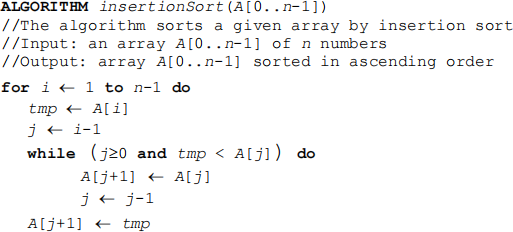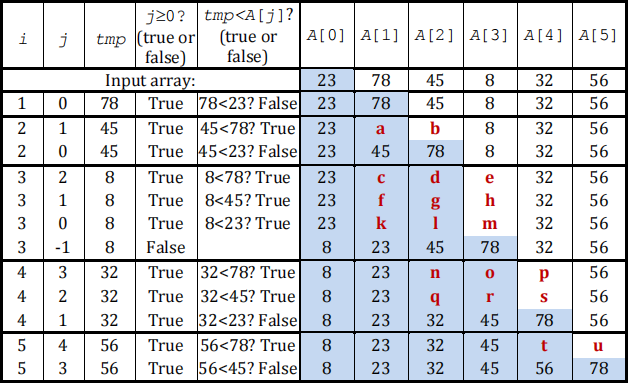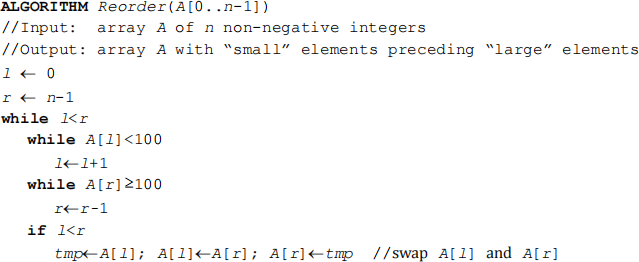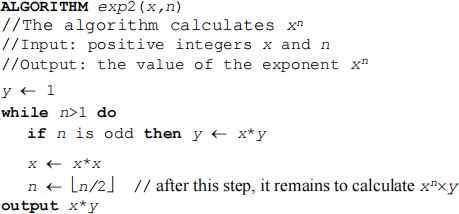COMP2711 - Algorithms and Data Structures 1
Hello, dear friend, you can consult us at any time if you have any questions, add WeChat: daixieit
COMP2711 - Algorithms and Data Structures 1
Coursework 1
Question 1 [6 marks]
Suppose a problem involves an input array of n elements. There are five algorithms A1, A2, ..., A5 for solving the problem. Algorithm Ai performs ti(n) operations, i = 1,2, … ,5,

The graphs of the functions ti(n) are presented below.

1.1-1.8 The following pseudocode (containing gaps) is designed to run the fastest algorithm depending on the input size n. Notice that n is a positive integer.
Moreover, since t5(1) = 0, we assume that n ≥ 2.
Fill in the underlined gaps in the pseudocode. [4 marks]

1.9-1.12 Arrange the functions ti(n), i = 1,2, … ,5, by growth rate, from slowest to fastest. [2 marks]
Question 2 [6 marks]
For each of the functions given below, state the big-O complexity class.
2.1 25n(n + 2)
2.2 n3 + 2n2 − 3n + 4
2.3 25n2 − 12n
2.4 30 log2 n + n
2.5 30n log2 n + 31n
2.6 2n log2 n + n2
Question 3 [5 marks]
Specify the big-O complexity class for the function n2 + n2 log2 n − 3n + 3.
Use the formal big-O definition to prove your answer. The proof should include the values of the constants c and n0 and their justification.
Question 4 [12 marks]
The insertion sort algorithm is stated below. Operation of insertion sort can be described as follows. The list at any moment is divided into two parts: sorted and unsorted. In each pass of the algorithm, the first element of the unsorted sub-list is inserted into the appropriate place of the sorted sub-list.

4.1– 4.7 [7 marks]
Consider the tracing table presented below. The input array is (23, 78, 45, 8, 32, 56). Each line of the table represents the array after the assignment A[j+1]←A[j] or A[j+1]←tmp is made. There are gaps indicated in red. Fill in the gaps.

4.8 What is a worst-case instance for insertionSort? [1 mark]
an array in descending order
an array consisting of equal elements
an array in ascending order
none of the above
4.9 What is the total number of comparisons tmp < A[j] done by the algorithm in the worst case for an array consisting of n elements? Provide a brief explanation. State the big-O complexity class (no need to use the formal definition). [4 marks]
Question 5 [5 marks]
The following algorithm operates on array A of n non-negative integers that represent the quantities of products available at a store. To simplify the replenishment process, a manager needs to reorder the array so that small quantities appear first, followed by large quantities, where
A[i] is small if A[i]<100,
A[i] is large if A[i]≥100.
In the pseudocode we assume that array A contains at least one small value and at least one large value.

5.1 How many swaps (3 assignments) are performed in the worst case? [3 marks]
State the big-O complexity class. [1 mark]
5.2 The required outcome can be achieved if we apply insertion sort to array A.
Which approach is faster: [1 mark]
Algorithm Reorder
Algorithm insertionSort
Question 6 [11 marks]
Consider the problem of calculating xn. The straightforward (brute-force) algorithm exp1(x,n) performs n multiplications, achieving the time complexity O(n).

A more efficient approach implements the following formula for xn:

or equivalently


Hint: to understand how the algorithm works, it is worth to trace it first for the case x = 2 and n = 8.
6.1 Trace algorithm exp2(x,n) with x = 2 and n = 11: [9 marks]

State the output.
6.2 State the big-O complexity class. [2 marks]
2021-11-11